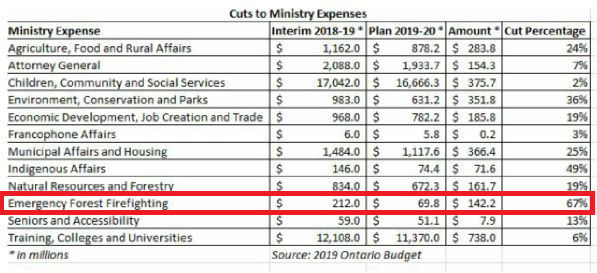The building of housing is a key issue, said Clark, who has set a target of 1.5 million new homes by 2031 to meet a supply crisis that has sent prices soaring.
“We know our communities must have the proper tools in place to support growth,” Clark added Tuesday at the annual convention of the Association of Municipalities of Ontario (AMO) in London, where 2,000 local politicians are gathered from across the province.
The minister,
stinging from a recent report by auditor general Bonnie Lysyk that found a controversial Greenbelt land swap “favoured certain developers” to the tune of $8.28 billion, acknowledged the announcement of facilitators is taking longer than he had hoped.
“We wanted to make sure the process was right,” he told the crowd. “So I want to thank you for your patience … we’re nearly there.”
Clark, who maintains he did not know his
chief of staff selected the parcels of land to be removed from the Greenbelt without proper input from civil servants or land use planning experts, did not mention the protected zone in his speech.
Nor did Ford in his appearance at the convention Monday, when he announced a
$1.2-billion fund to encourage municipalities to build more housing.
In the system of regional governments, municipal responsibilities are split between a region and its cities and towns, raising the possibility of bureaucratic duplication and inefficiency as they grow into each other. For example, there are concerns two layers of government can result in red tape that slows the building of housing and public transit.
Peel Region will
cease to exist Jan. 1, 2025, making Mississauga, Brampton and Caledon stand-alone municipalities. Between now and then, officials will be working to untangle the regional government by figuring out how to deliver services like policing, trash collection, social services, water treatment and roads in the three municipalities.
Mississauga had long complained it covered more than its fair share of Peel’s costs, subsidizing services in Brampton and Caledon.
AMO president Colin Best, a Halton Region councillor, applauded an upcoming move by Clark to make sure a new definition of affordable housing would consider local income levels, calling it a “critical factor.”
“Any definition of affordable housing needs to consider everyone’s ability to pay the rent,” Best said in a statement.
Clark said the government is working on a definition of affordable housing “that’s genuinely affordable, but which doesn’t stand in the way of getting shovels in the ground.”
To be introduced in legislation this fall, the change would “reflect the reality of different housing markets across Ontario” and provide more clarity on when housing projects can be exempted or get discounts on development charges builders pay to municipalities to help with the cost of infrastructure, the minister added.
Meanwhile, Health Minister Sylvia Jones told the convention that the province will revert to a cost-sharing formula for local public health units in which Ontario will provide 75 per cent of the funding and municipalities 25 per cent.
The provincial portion had fallen to 70 per cent for health units, which were heavily involved in the fight against COVID-19 during the pandemic and remain on the front lines of the battle against the evolving virus.
Jones also said base funding for health units will increase by one per cent annually over the next three years “so they can more effectively plan and prepare.”
Best said the changes are “an important step toward building a more sustainable local public health system.”
Jones also said any health units that voluntarily merge with neighbouring ones to streamline operations and care for more people can expect help with “one-time funding” to get through the merger.







